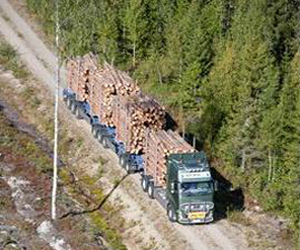
Australia’s forestry sector is continuing to enjoy some of the best conditions in its history, according to a report released today by the Australian Bureau of Agricultural and Resource Economics and Sciences (ABARES).
The report, Australian forest and wood products statistics: September and December quarters 2016, showed that the volume and value of logs harvested reached record levels in 2015–16.
ABARES acting Executive Director, Peter Gooday, said the figures show that Australia’s log harvest exceeded 30 million cubic metres for the first time in 2015–16, valued at over $2.3 billion.
This growth was driven by higher harvest of hardwood plantation pulplogs and a new record harvest of softwood plantation logs, reaching 16.3 million cubic metres in 2015–16.
“This growth has been underpinned by continued strong export demand for our products, especially hardwood and softwood woodchips and roundwood logs,” Mr Gooday said.
Export demand has continued its strong performance into the first half of 2016–17, with higher roundwood and woodchip exports contributing to an overall rise of 7.8%, compared with the first six months of 2015–16.
The higher log harvest was backed up by production increases across most of Australia’s wood processing industries.
Hardwood sawnwood output increased for the first time since 2012–13, and wood-based panels increased by over 7% in 2015–16.
Paper and paperboard production was also strong over the year, with growth in output of all paper categories except for newsprint, which fell to its lowest level since 1981–82.
“Consumption of wood products was also higher across most categories in 2015–16, with hardwood sawnwood consumption up 37% over the year, wood-based panels up 5.3 per cent and aggregate paper consumption up 1.8 per cent,” Mr Gooday said.
However, in contrast to these positive trends, ABARES estimated softwood sawnwood production and consumption have slightly declined in 2015–16, driven by a modest decline in the number of detached dwellings commenced during the year.
In the first half of 2016–17, overall import values have declined by 6.4% compared with the first six months of 2015–16, suggesting a potential softening of domestic demand for some products.





